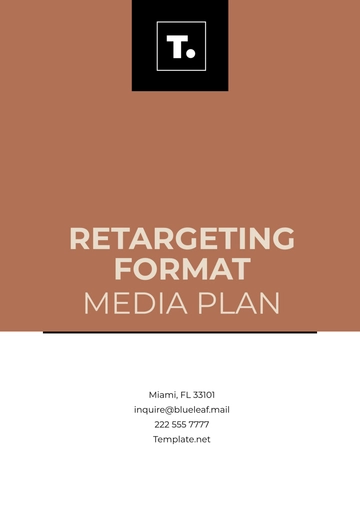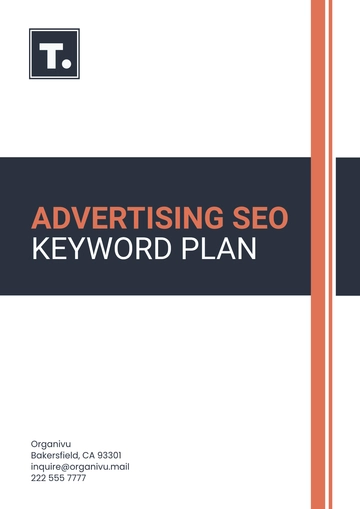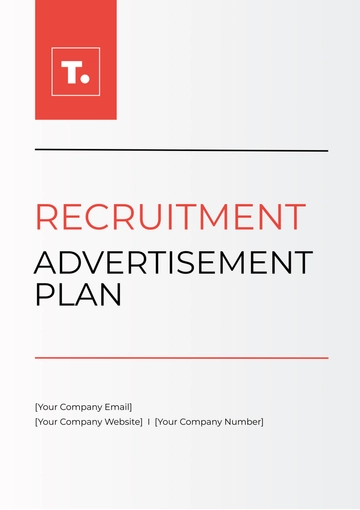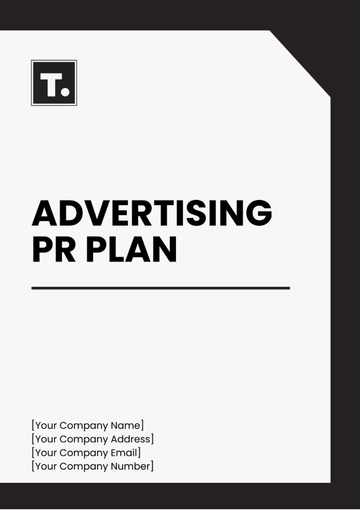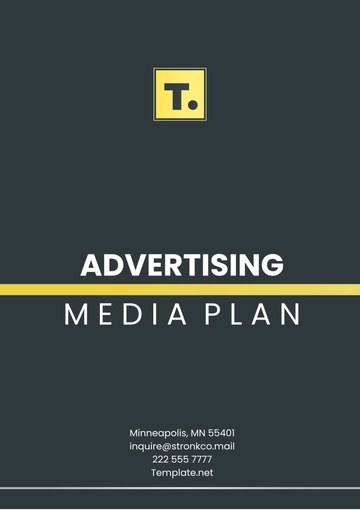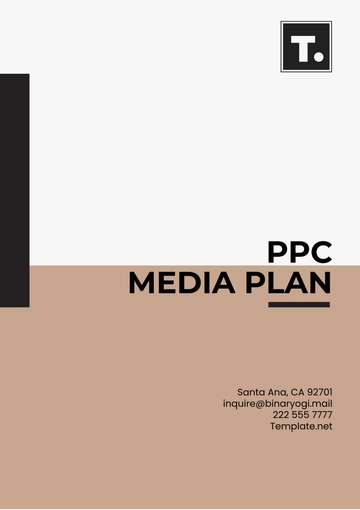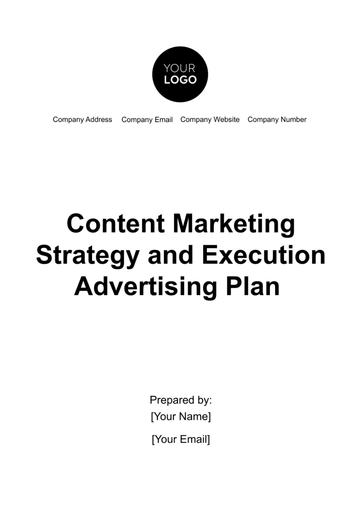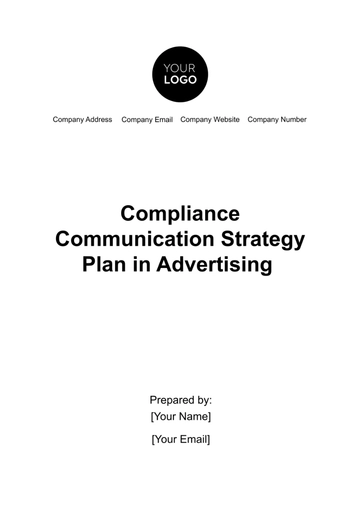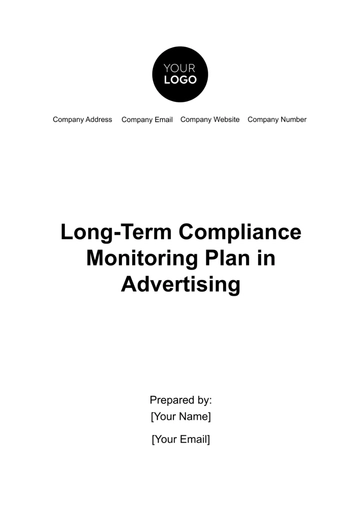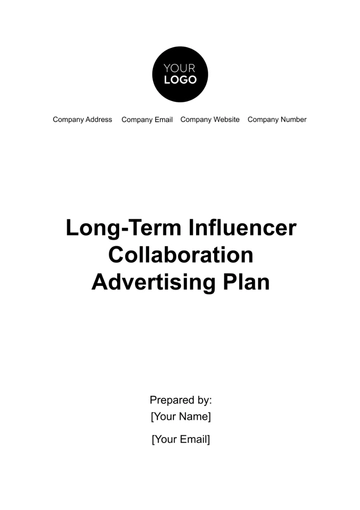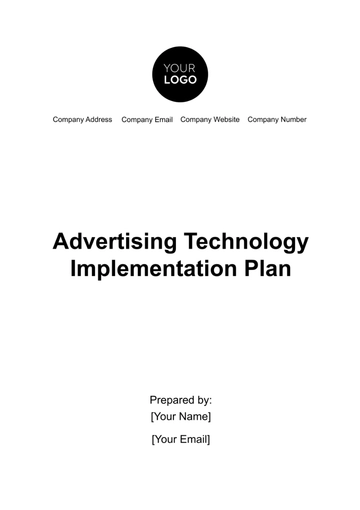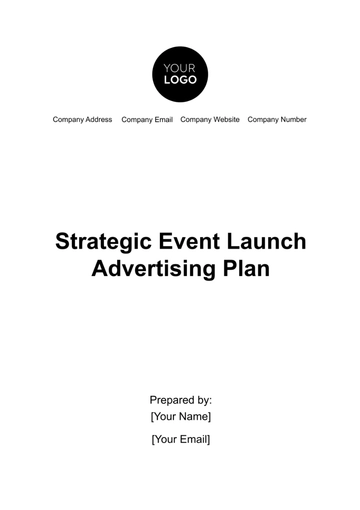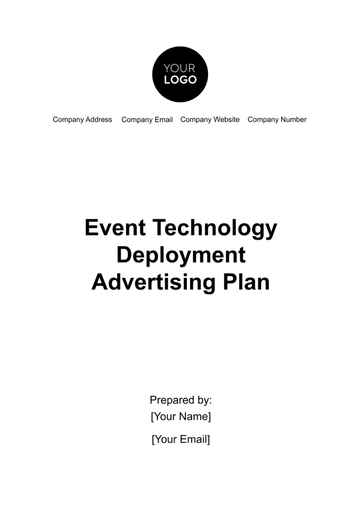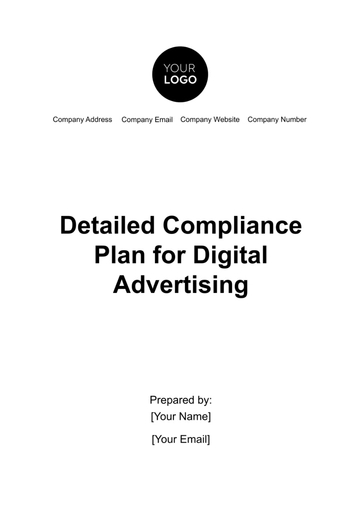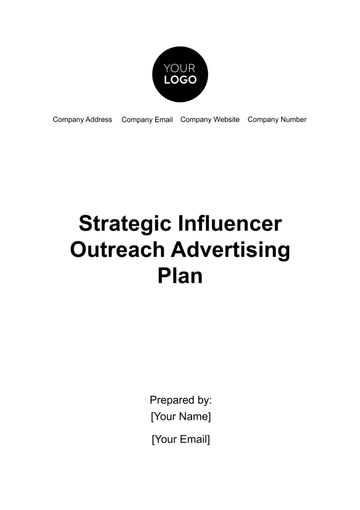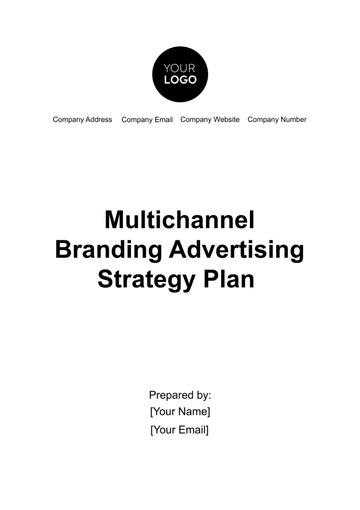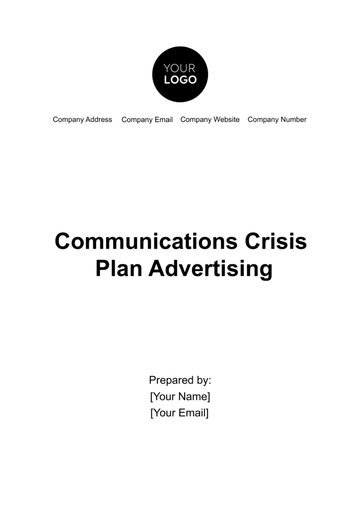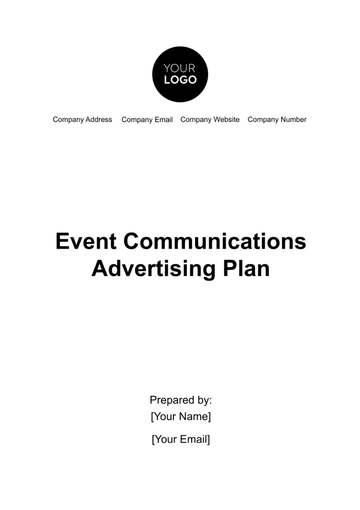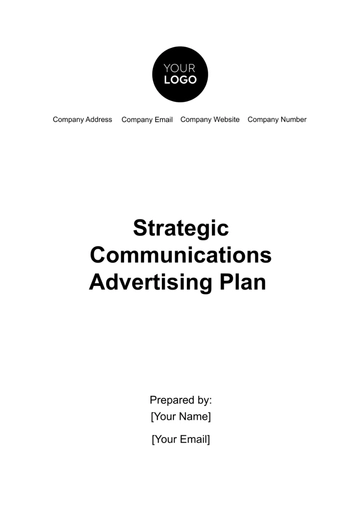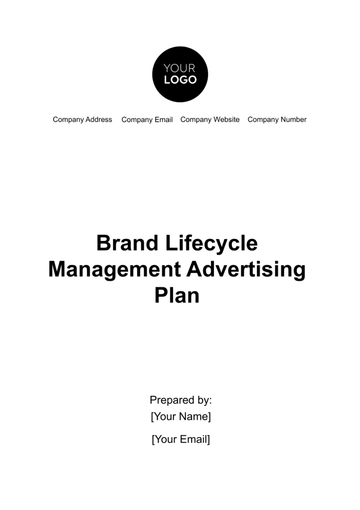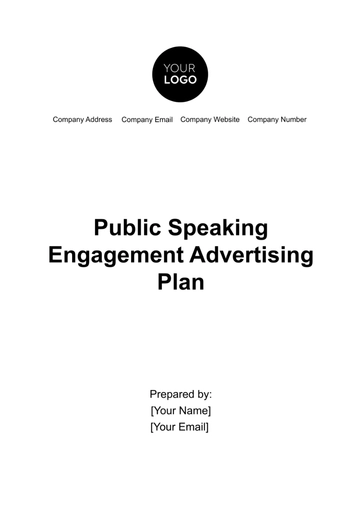Free Compliance Communication Strategy Plan in Advertising
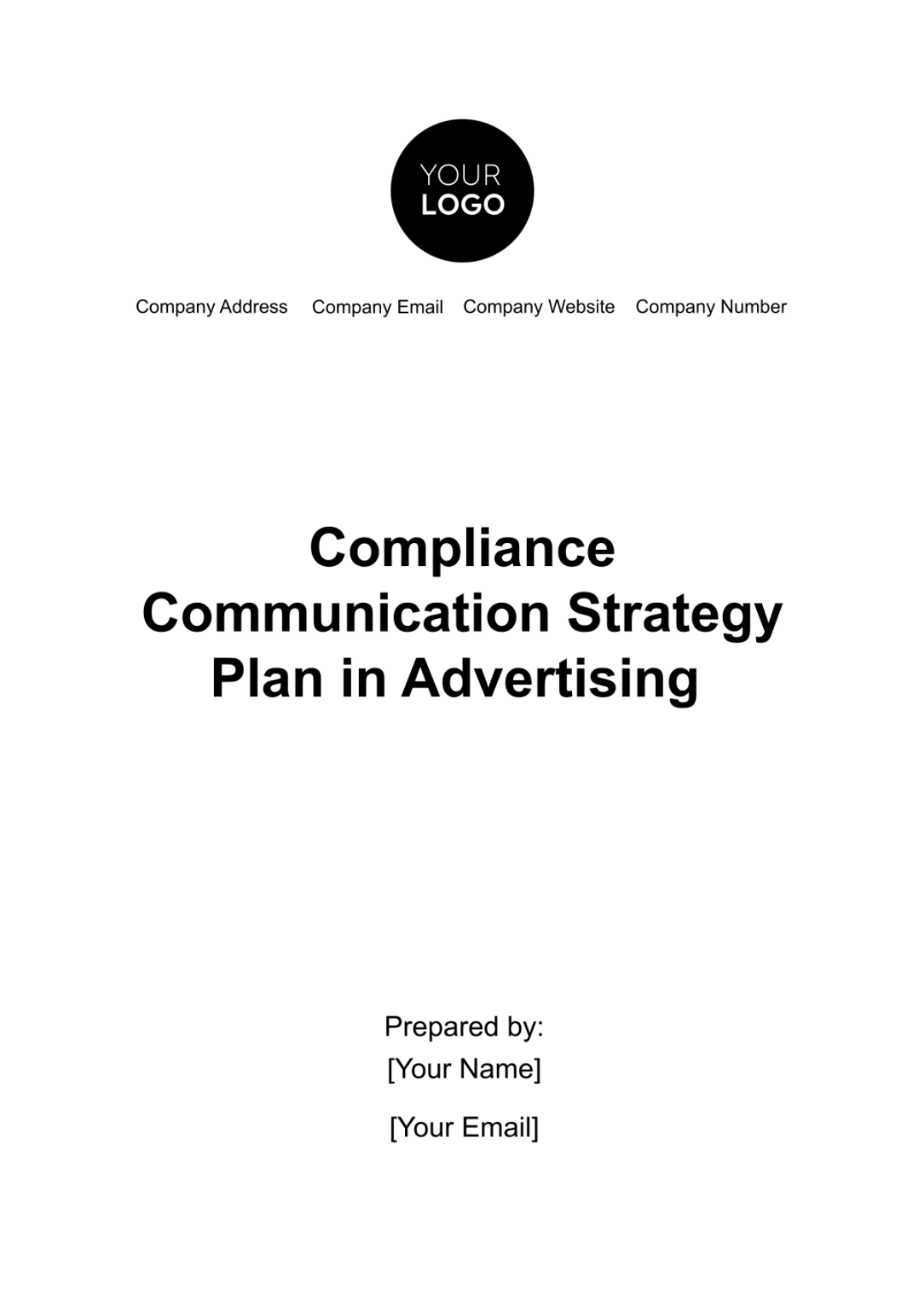
Executive Summary
[Your Company Name] is a leading advertising agency operating in the United States. With a strong commitment to ethical advertising practices and legal compliance, we recognize the critical importance of maintaining a stellar reputation in the industry. This Compliance Communication Strategy Plan has been developed to guide our advertising activities, ensuring that they not only captivate our target audiences but also adhere to the ever-evolving landscape of advertising regulations and ethics.
In recent years, the advertising industry has witnessed a significant shift in the way regulations are enforced. As we move forward into 2050 and beyond, it is imperative that [Your Company Name] stays ahead of these changes to avoid any potential legal pitfalls or reputational damage. This plan outlines our proactive approach to achieving and maintaining compliance while preserving our creative and innovative advertising edge.
Introduction
Background
The world of advertising in 2050 is characterized by unprecedented technological advancements and increasing consumer awareness of ethical considerations. Advertising regulations have evolved to address these changes, with a focus on transparency, truthfulness, and data privacy.
[Your Company Name] operates in this dynamic landscape, where we collaborate with various clients spanning industries from technology to healthcare. Our commitment to compliance stems from a deep understanding of the implications of non-compliance, including fines, legal actions, and damage to our reputation.
Purpose
The primary purpose of this Compliance Communication Strategy Plan is to provide a comprehensive framework that ensures all advertising campaigns, whether digital or traditional, align with relevant laws and regulations. It serves as a roadmap to:
1. Establish clear compliance objectives and priorities.
2. Identify key stakeholders and their roles in compliance.
3. Outline communication channels for disseminating compliance information.
4. Define key compliance messages and how they should be conveyed.
5. Establish monitoring mechanisms to proactively address any compliance issues.
6. Implement training programs to educate our team and partners on compliance matters.
7. Provide clear reporting mechanisms for anyone to raise compliance concerns.
8. Foster a culture of compliance within [Your Company Name] and among our partner companies.
Compliance Objectives
At [Your Company Name], we have set forth several compliance objectives to ensure that our advertising practices align with the regulatory environment of 2050 and beyond. These objectives include:
A. Legal Compliance
Our first and foremost objective is to ensure that all advertising materials adhere to the laws and regulations governing the industry. We will continually monitor changes in legislation and update our practices accordingly.
B. Transparency
We are committed to maintaining transparency in all our advertising practices. This includes clearly communicating product benefits, pricing, and any potential risks associated with the products or services we promote.
C. Responsiveness
In an ever-changing advertising landscape, responsiveness is crucial. We pledge to promptly respond to any compliance concerns or issues raised by our team, partners, or customers. Rapid issue resolution is a priority for us.
D. Continuous Improvement
We recognize that compliance is an ongoing process. As such, we will continuously review and refine our compliance strategies to stay ahead of evolving regulations and ethical standards.
Target Audience
[Your Company Name] recognizes that effective communication of compliance in advertising requires a clear understanding of our target audience. In [Year] and beyond, our target audience encompasses a diverse group of stakeholders:
A. Regulatory Authorities
Regulatory bodies, such as the [Sample Regulatory Authority], play a vital role in overseeing advertising practices. We will maintain open lines of communication with these authorities to stay informed about the latest regulatory changes and to demonstrate our commitment to compliance.
B. Customers and Clients
Our customers and clients are at the heart of our advertising efforts. It is crucial to communicate our commitment to compliance to ensure their trust and loyalty. We will provide clear and transparent information about our adherence to regulations in all customer-facing communications.
C. Internal Teams
Within [Your Company Name], our internal teams are key stakeholders. They include our creative, marketing, and legal departments. Ensuring that they are well-informed about compliance requirements and expectations is paramount. We will conduct regular training sessions and workshops to keep our teams up-to-date.
D. [Your Partner Company Name]
Collaboration with partner companies is common in the advertising industry. We will establish communication channels with our partner companies, such as [Your Partner Company Name], to align on compliance standards and expectations.
Communication Channels
Effective communication of compliance information requires a well-defined set of communication channels. In 2050, we will utilize various channels to reach our target audiences:
A. [Your Company Website]
Our website will serve as a central hub for compliance information. We will maintain a dedicated section that includes compliance updates, policies, and contact information for compliance-related queries.
B. [Your Company Social Media]
Social media platforms have become powerful tools for communication. We will leverage platforms such as [Your Company Social Media] to share compliance messages, industry updates, and engage with our audience.
C. [Your Company Email]
Email remains a direct and effective communication channel. We will send compliance updates and newsletters to our clients, partners, and internal teams through our official [Your Company Email] addresses.
D. Regulatory Authorities' Portals
To ensure transparency and regulatory compliance, we will actively engage with regulatory authorities through their dedicated portals, submitting necessary documentation and reports as required.
E. Direct Mail
For targeted communication, we may use direct mail to reach specific stakeholders with compliance updates and reports.
F. Phone Communication
In certain cases, direct phone communication may be necessary, especially when addressing urgent compliance concerns or inquiries.
Compliance Messaging
A. Key Compliance Messages
[Your Company Name] is committed to conveying key compliance messages that align with our objectives:
1. Clear and Concise Advertising: We will ensure that our advertising materials are straightforward, avoiding any misleading or deceptive information.
2. Honesty and Transparency: Transparency will be at the forefront of our advertising. We will provide accurate and complete information about products and services.
3. Legal Compliance: Our advertising practices will strictly adhere to industry standards and legal requirements, including data privacy regulations and advertising codes.
4. Reporting Mechanisms: We encourage stakeholders to use our designated reporting mechanisms to raise any compliance concerns or questions.
B. Message Delivery
These key compliance messages will be integrated into all advertising campaigns, whether they are digital, print, or multimedia. We will use the communication channels mentioned in section 5 to disseminate these messages effectively.
Compliance Monitoring
Effective compliance monitoring is essential to identify and address any deviations from our advertising compliance standards. In 2050, [Your Company Name] will employ a comprehensive approach to ensure compliance.
A. Compliance Audits
1. Regular compliance audits will be conducted by our internal compliance team. These audits will assess the alignment of advertising materials with relevant regulations. Sample compliance audit activities include reviewing advertising scripts, examining digital ad content, and assessing marketing campaigns.
2. Audits will be scheduled quarterly, and random audits will be performed as needed to maintain compliance vigilance.
B. Issue Resolution
1. In cases where compliance issues are identified, a structured resolution process will be initiated. This process will involve collaborating with the relevant teams to rectify issues promptly.
2. Corrective actions may include revising advertising materials, providing additional training to employees, or updating internal policies and procedures.
Compliance Training
[Your Company Name] recognizes the critical role of education and training in promoting compliance awareness among our teams and partners.
A. Training Programs
1. We will implement a comprehensive training program designed to educate employees and partners on advertising compliance. Training sessions will be conducted both in-person and through online platforms to accommodate different learning preferences.
2. Topics covered in training will include regulatory requirements, ethical advertising practices, data privacy, and the proper use of advertising channels.
Training Materials
1. Training materials will be developed to support our training programs. These materials may include e-learning modules, compliance manuals, and reference guides.
2. [Your Company Name] will also maintain a digital library of compliance resources accessible to all employees and partners for self-guided learning.
Compliance Reporting
Transparent and accessible reporting mechanisms are essential for raising compliance concerns and ensuring timely resolution.
A. Reporting Mechanisms
1. [Your Company Name] will establish clear and user-friendly reporting mechanisms for employees, partners, and customers. These mechanisms will include dedicated email addresses, hotline numbers, and an online reporting portal accessible through our website.
2. Anonymous reporting options will also be available to encourage the reporting of concerns without fear of retaliation.
B. Incident Response
1. Upon receiving a compliance report, [Your Company Name] will follow a well-defined incident response process. This process will involve promptly acknowledging receipt of the report, initiating an investigation, and determining the appropriate course of action.
2. Investigations will be conducted by our internal compliance team, and, if necessary, external experts may be consulted.
3. Once the investigation is complete, findings and actions taken will be communicated to the individual who reported the concern, and, if applicable, appropriate authorities.
Compliance Review and Adaptation
In the rapidly evolving advertising landscape of 2050 and beyond, [Your Company Name] acknowledges the necessity of regular reviews and adaptations to maintain compliance. This section outlines our approach to continuous improvement:
A. Regular Compliance Reviews
1. [Your Company Name] will conduct comprehensive compliance reviews on an annual basis. These reviews will encompass a thorough evaluation of our compliance strategies, communication channels, training programs, and monitoring mechanisms.
2. The purpose of these reviews is to identify any gaps, emerging compliance risks, or opportunities for enhancement. The findings will be documented, and corrective actions will be planned and implemented.
B. Adapting to Regulatory Changes
1. We recognize that regulations in the advertising industry can change rapidly. To remain agile and responsive, [Your Company Name] will establish a dedicated regulatory affairs team responsible for monitoring and interpreting new regulations and industry standards.
2. When significant regulatory changes occur, we will promptly adjust our compliance strategies, update training programs, and modify messaging to ensure immediate alignment with the new requirements.
Measurement of Compliance Effectiveness
Effectiveness in compliance is not just about ticking boxes; it's about ensuring that our efforts yield the desired results. This section explains how [Your Company Name] will measure the effectiveness of its compliance initiatives:
A. Key Performance Indicators (KPIs)
We will establish a set of Key Performance Indicators (KPIs) specifically tailored to measure compliance effectiveness. These KPIs will include metrics such as the number of compliance audits conducted, the frequency of reporting, response times to compliance concerns, and the percentage of employees completing compliance training.
B. Surveys and Feedback
To gain insights from our stakeholders, we will conduct regular surveys and solicit feedback regarding our compliance efforts. This will help us understand the perception of our compliance practices among clients, partners, and employees.
Continuous Improvement
The data collected through KPIs, surveys, and feedback will be analyzed to identify areas where improvements are needed. If performance falls short of our objectives, we will take corrective actions to enhance our compliance initiatives.
Conclusion
This Compliance Communication Strategy Plan is a testament to [Your Company Name]'s unwavering commitment to maintaining compliance in all facets of our advertising endeavors as we venture into the advertising landscape of 2050 and beyond.
This plan underscores our recognition of the dynamic and evolving nature of advertising regulations and ethics. We understand that staying compliant requires constant vigilance, adaptability, and a proactive approach. To that end, we have detailed our compliance objectives, strategies, and mechanisms to engage with stakeholders.
- 100% Customizable, free editor
- Access 1 Million+ Templates, photo’s & graphics
- Download or share as a template
- Click and replace photos, graphics, text, backgrounds
- Resize, crop, AI write & more
- Access advanced editor
Introducing the Compliance Communication Strategy Plan in Advertising Template from Template.net. This tool helps develop a plan to communicate compliance-related information within advertising strategies, ensuring clarity and adherence to regulations. Download to craft a strategic communication plan, seamlessly integrating compliance in advertising messages, maintaining transparency and effectiveness.
You may also like
- Finance Plan
- Construction Plan
- Sales Plan
- Development Plan
- Career Plan
- Budget Plan
- HR Plan
- Education Plan
- Transition Plan
- Work Plan
- Training Plan
- Communication Plan
- Operation Plan
- Health And Safety Plan
- Strategy Plan
- Professional Development Plan
- Advertising Plan
- Risk Management Plan
- Restaurant Plan
- School Plan
- Nursing Home Patient Care Plan
- Nursing Care Plan
- Plan Event
- Startup Plan
- Social Media Plan
- Staffing Plan
- Annual Plan
- Content Plan
- Payment Plan
- Implementation Plan
- Hotel Plan
- Workout Plan
- Accounting Plan
- Campaign Plan
- Essay Plan
- 30 60 90 Day Plan
- Research Plan
- Recruitment Plan
- 90 Day Plan
- Quarterly Plan
- Emergency Plan
- 5 Year Plan
- Gym Plan
- Personal Plan
- IT and Software Plan
- Treatment Plan
- Real Estate Plan
- Law Firm Plan
- Healthcare Plan
- Improvement Plan
- Media Plan
- 5 Year Business Plan
- Learning Plan
- Marketing Campaign Plan
- Travel Agency Plan
- Cleaning Services Plan
- Interior Design Plan
- Performance Plan
- PR Plan
- Birth Plan
- Life Plan
- SEO Plan
- Disaster Recovery Plan
- Continuity Plan
- Launch Plan
- Legal Plan
- Behavior Plan
- Performance Improvement Plan
- Salon Plan
- Security Plan
- Security Management Plan
- Employee Development Plan
- Quality Plan
- Service Improvement Plan
- Growth Plan
- Incident Response Plan
- Basketball Plan
- Emergency Action Plan
- Product Launch Plan
- Spa Plan
- Employee Training Plan
- Data Analysis Plan
- Employee Action Plan
- Territory Plan
- Audit Plan
- Classroom Plan
- Activity Plan
- Parenting Plan
- Care Plan
- Project Execution Plan
- Exercise Plan
- Internship Plan
- Software Development Plan
- Continuous Improvement Plan
- Leave Plan
- 90 Day Sales Plan
- Advertising Agency Plan
- Employee Transition Plan
- Smart Action Plan
- Workplace Safety Plan
- Behavior Change Plan
- Contingency Plan
- Continuity of Operations Plan
- Health Plan
- Quality Control Plan
- Self Plan
- Sports Development Plan
- Change Management Plan
- Ecommerce Plan
- Personal Financial Plan
- Process Improvement Plan
- 30-60-90 Day Sales Plan
- Crisis Management Plan
- Engagement Plan
- Execution Plan
- Pandemic Plan
- Quality Assurance Plan
- Service Continuity Plan
- Agile Project Plan
- Fundraising Plan
- Job Transition Plan
- Asset Maintenance Plan
- Maintenance Plan
- Software Test Plan
- Staff Training and Development Plan
- 3 Year Plan
- Brand Activation Plan
- Release Plan
- Resource Plan
- Risk Mitigation Plan
- Teacher Plan
- 30 60 90 Day Plan for New Manager
- Food Safety Plan
- Food Truck Plan
- Hiring Plan
- Quality Management Plan
- Wellness Plan
- Behavior Intervention Plan
- Bonus Plan
- Investment Plan
- Maternity Leave Plan
- Pandemic Response Plan
- Succession Planning
- Coaching Plan
- Configuration Management Plan
- Remote Work Plan
- Self Care Plan
- Teaching Plan
- 100-Day Plan
- HACCP Plan
- Student Plan
- Sustainability Plan
- 30 60 90 Day Plan for Interview
- Access Plan
- Site Specific Safety Plan

